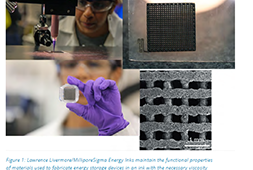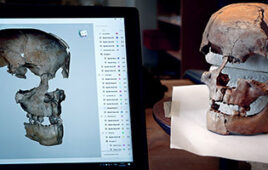
Feetz, a San Diego company, offers wide selection of 3D printed shoes.
Thanks to 3D printing, customers across the country can now order a customized loafer, sneaker or sandal designed specifically to fit their exact foot— and receive it in less than 24 hours.
Feetz, a San Diego-based company founded by Lucy and Nigel Beard, creates a shoe that is almost entirely printed, with approximately 90 percent of each shoe created with a 3D printer. The only part of the shoe that is not made from the 3D printer is the fabric lining, which is produced using traditional methods because 3D printers are currently unable to print fabrics.
The company has developed their own version of the fused filament fabrication custom machine and do their own slicing, specifically geared towards shoes.
Using their own patented polymer—the only polymer that can print in today’s shoe materials—Feetz is able to create a material that is three-to-four times more flexible than anything on the market.
Customers use a smart phone app to send a digital photo of their foot, which allows the company to see up to 5,000 data points of an individual’s foot and produce a shoe within one-to-two millimeters of the person’s foot. Feetz users also download an application to customize the size and shape of the 3D printed shoe to fit their foot as closely as possible.
Machine learning is used to create each specific shoe, allowing the company to 3D print it in under a day.
The 3D printed shoes are biodegradable and made entirely with recycled or recyclable materials.
“What we do in the 3D printing is we use one single material and we change the way in which we print it,” Nigel, the Chief Technology Officer, said in an interview with R&D Magazine. “So we change the infill in certain areas of the outsole.
“Where you need more wear we would add more infill and where you need more bounce we would add less infill or change the geometry slightly to give you more cushion,” he added. “We are using one single material and using geometry to augment and match performance.”
Feetz allows customers to send back their shoes free of charge once they are done, so that they can be recycled and reused as material for more 3D printed shoes.
“We have three times as many people on this planet in the last 50 years and if you think about something as basic as shoes, we’re just making more and more of them,” said Lucy, in an interview with R&D Magazine. “100 percent of shoes go into a landfill and about 99 percent of them don’t biodegrade.
“They have chemicals in them and materials in them and the way that they are made with 13-plus materials all bonded together they don’t biodegrade,” she added. “We can melt it, re-chip it and turn it into a new shoe up to 20 times.”
While they are cornering the market on 3D printed shoes, Nigel said Feetz will continue to advance with the technology.
“As with any technology, materials will advance, we have our own R&D team here and we are always looking at new materials,” he said.





